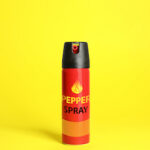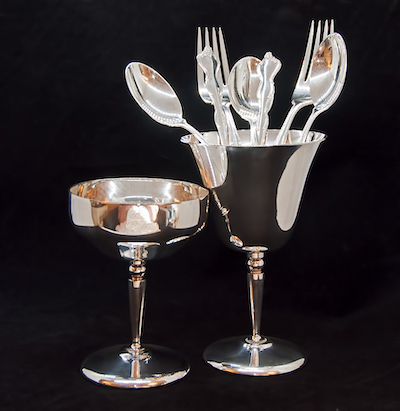Silver has long been a cherished and sought-after precious metal, valued for its beauty, versatility, and durability. It has been used for centuries in various applications, from jewelry and decorative items to tableware and even currency. When purchasing silver items, you may come across different types of silver, such as sterling silver and pure silver. Although they may look similar, there are key differences between the two. In this article, we will explore these differences, their applications, and the factors to consider when choosing between sterling silver and pure silver.
Understanding the Composition
- Pure Silver
Pure silver, also known as fine silver, has a silver content of 99.9%. It is the purest form of silver available and is soft, malleable, and highly ductile. Pure silver is an excellent conductor of heat and electricity and has a bright, white luster. However, due to its softness, pure silver is not ideal for many applications, as it can easily bend, scratch, or become misshapen.
- Sterling Silver
Sterling silver is an alloy, which means it is a mixture of metals. It contains 92.5% silver and 7.5% other metals, usually copper. This addition of copper increases the strength and durability of the silver, making it more suitable for everyday use. Sterling silver items are often stamped with the numbers “925” or “sterling” to indicate their composition.
Comparing the Properties
- Durability
Sterling silver’s alloy composition makes it more durable and resistant to wear and tear compared to pure silver. This added strength means that sterling silver items are more suitable for everyday use and can withstand the rigors of daily wear. However, this also means that sterling silver is more prone to tarnishing, as the copper content in the alloy reacts with the air and moisture.
Pure silver, on the other hand, is more resistant to tarnishing. However, its softness makes it more susceptible to damage, such as scratches and dents. Consequently, pure silver is more suited for delicate or decorative items that do not require frequent handling or wear.
- Color and Luster
Both sterling silver and pure silver have a bright, white luster. However, due to its higher silver content, pure silver has a slightly brighter, whiter appearance compared to sterling silver. This subtle difference can be difficult to distinguish with the naked eye, but it becomes more apparent when the two types of silver are placed side by side.
- Conductivity
Pure silver is the most electrically and thermally conductive of all metals. This makes it ideal for applications requiring high conductivity, such as electronics and electrical contacts. In contrast, sterling silver’s conductivity is slightly lower due to the presence of copper and other metals in the alloy. While it is still a good conductor, it is not as efficient as pure silver in these applications.
- Price
As pure silver contains a higher percentage of silver, it is generally more expensive than sterling silver. However, the price difference can vary depending on the specific item, its craftsmanship, and the current market value of silver. It is essential to compare the prices of similar items to ensure you are getting the best value for your investment.
Applications
- Jewelry
Sterling silver is widely used in the jewelry industry due to its durability and affordability. It is ideal for rings, necklaces, bracelets, and earrings that are subject to daily wear and tear. Sterling silver’s natural luster complements various gemstones and looks equally beautiful when worn alone or with other metals.
In contrast, pure silver is more suitable for delicate, intricate pieces of jewelry or those intended for occasional wear. Its softness makes it ideal for creating intricate designs and detailed patterns. However, due to its susceptibility to damage, it may not be the best choice for items like rings or bracelets that are more prone to wear and tear.
- Tableware and Decorative Items
Sterling silver has long been the standard for fine tableware, such as flatware, serving dishes, and tea sets. Its durability and resistance to wear make it ideal for items that are frequently used and washed. Additionally, sterling silver’s natural antimicrobial properties make it a popular choice for cutlery and serving utensils.
Pure silver, on the other hand, is more commonly used for decorative items that are not intended for regular use. These may include ornate picture frames, delicate trinket boxes, or elegant candlesticks. The bright luster and purity of pure silver make these items particularly eye-catching and valuable.
- Investment and Collectibles
Both sterling silver and pure silver can be valuable investments or collectibles. Silver bullion bars and coins are usually made of pure silver due to its higher silver content and resistance to tarnishing. These items are often purchased as a hedge against inflation or economic instability.
Sterling silver collectibles, such as vintage flatware or limited-edition commemorative items, can also be a valuable investment. The value of these items often depends on factors such as rarity, age, craftsmanship, and condition. It is essential to research the market and consult with experts before investing in silver collectibles.
Factors to Consider When Choosing Between Sterling Silver and Pure Silver
- Intended Use
Consider the intended use of the silver item when choosing between sterling silver and pure silver. If you are looking for a durable piece that can withstand daily wear and tear, such as a ring or bracelet, sterling silver is the better option. If you are interested in a decorative item or a piece of jewelry for occasional wear, pure silver may be more suitable.
- Budget
Pure silver is generally more expensive than sterling silver due to its higher silver content. If budget is a concern, you may want to opt for sterling silver, which is more affordable yet still offers a beautiful, lustrous appearance.
- Care and Maintenance
Sterling silver requires more care and maintenance than pure silver, as it is more prone to tarnishing. If you prefer a low-maintenance option, you may want to choose pure silver. However, with proper care and regular cleaning, sterling silver can maintain its shine and luster for years.
- Personal Preference
Ultimately, the choice between sterling silver and pure silver comes down to personal preference. Both types of silver have their unique attributes and applications, so it is essential to consider your specific needs and desires when making a decision.
When it comes to choosing between sterling silver and pure silver, there is no one-size-fits-all answer. Each type of silver has its advantages and disadvantages, depending on its intended use, durability, appearance, and price. By understanding the differences between sterling silver and pure silver, you can make a more informed decision when purchasing silver items. Whether you are looking for a beautiful piece of jewelry, an heirloom-quality tableware set, or a valuable investment, both sterling silver and pure silver offer an array of options to suit your needs.










